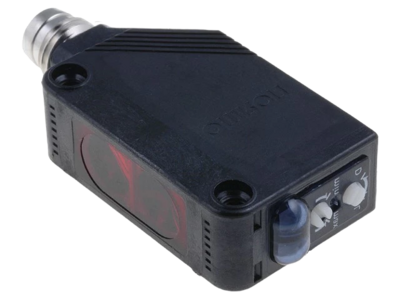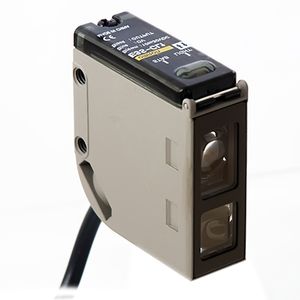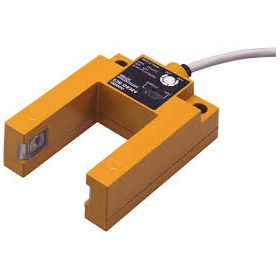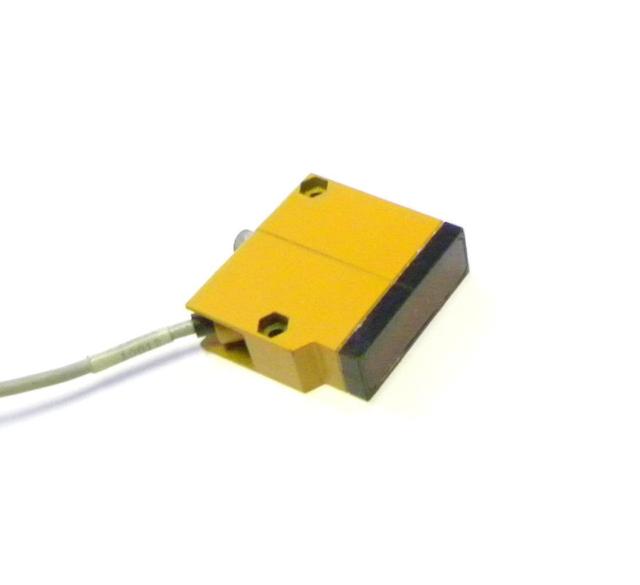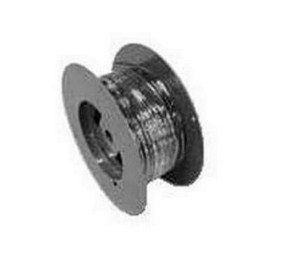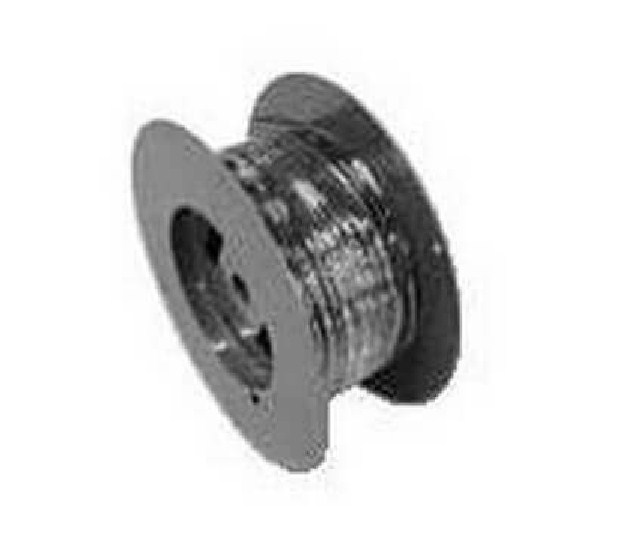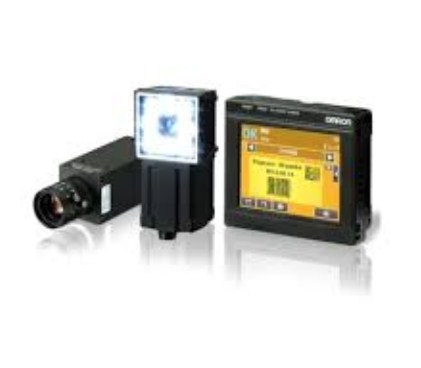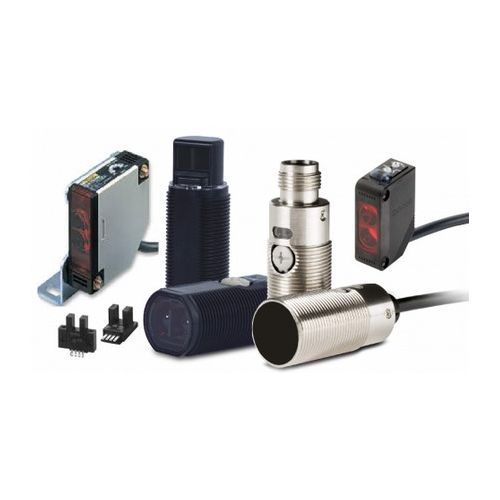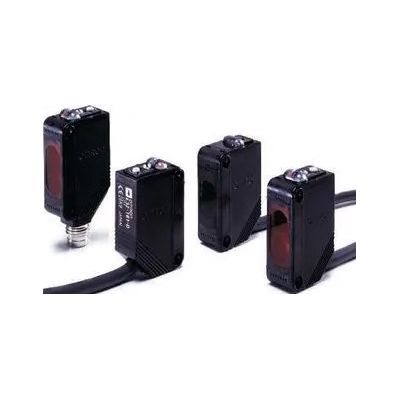Omron Photoelectric Sensors Other
IN STOCK!!!
omron e3z b87
- Working range: 0.01-2 meters
- Type of output signal: PNP
- Power supply voltage: 12-24 V DC
- Operating temperature: -10 to 60 °C
- Protection class: IP67
OMRON E32-E01R 10M BY OMG - Fiber optic sensor head, 100m optical fiber, 2.2mm extra flexible multicore optical fiber with min. bending radius R1.
E32 E02 Fiber optic sensor 10m fibre roll, 1.1mm monocore
Color Photoelectric Sensor
art. E3AS0001B
E3AS series
art. E3AS0016M
E3AS series
art. E3AS0028D
E3AS series
art. E3AS0148E
E3AS series
art. E3AS0136A
E3AS series
art. E3AS0146R
E3AS series
art. E3AS0124H
E3AS series
art. E3AS0134E
E3AS series
art. E3AS0100M
E3AS series
art. E3AS0122A
E3AS series
art. E3AS0073M
E3AS series
art. E3C 1010E
Other Separate Amplifier
art. E3C 2057G
E3C-LDA series
art. E3C 2058E
E3C-LDA series
art. E3F12012B
art. AA029797A
E3H2 series
art. AA029793R
E3H2 series
art. E3JK2020M
E3JK series
Photoelectric sensors use light-based technologies to determine if an object is present or absent. By producing a light beam, often visible or infrared, and observing changes in the beam's intensity or interruption, they are able to perceive objects. Because these sensors don't make contact with anything, they reduce wear and tear on moving parts, which makes them a popular choice for industrial automation. They are highly versatile, with various configurations designed to suit different applications.
One of the top manufacturers of industrial automation, Omron, offers a large range of photoelectric sensors that are known for their innovative technology, durability, and adaptability. These sensors are made to withstand the many demands of industrial settings, such as packing, quality assurance, and assembly lines.
The Benefits of Using Omron Photoelectric Sensors
Many people are aware of Omron photoelectric sensors' superior quality and cutting-edge technology. Their benefits extend across various industrial applications, from manufacturing to logistics and beyond.
- High Precision and Accuracy: Precise detection is provided by photoelectric sensors, guaranteeing reliable and consistent outcomes. This precision is crucial in applications such as manufacturing lines and quality control, where even a slight deviation can impact the final product.
- Versatility: Omron photo electric sensor offers a range of photoelectric sensor types, such as retro-reflective, diffuse reflection, and through-beam versions. They can be used for a variety of activities because of their versatility, such as monitoring tank fill levels and locating objects on conveyor belts.
- Durable and Robust Design: Omron sensors are built to survive in challenging industrial settings. Because they are constructed of durable materials and can tolerate extreme temperatures, dust, wetness, and vibrations, they are suitable for a range of industries.
- Non-Contact Operation: The non-contact nature of photoelectric sensors reduces wear and tear on machinery, leading to longer equipment life and reduced maintenance costs. This feature also minimizes the risk of contamination in sensitive applications.
- Quick Response Time: sensor photoelectric omron can keep up with high-speed industrial processes because of their quick reaction times. This responsiveness is critical for maintaining productivity and efficiency.
- Easy Integration: Omron sensors are designed for easy integration into existing automation systems. They support a variety of communication protocols and can be quickly installed without significant downtime or reconfiguration.
- Advanced Features: Omron photo sensor come with advanced features such as background suppression, adjustable sensitivity, and smart connectivity options. These features enhance their functionality and allow for customization to suit specific application needs.
Types of Photoelectric Sensors
Omron sensor photoelectric use light-based technologies to identify objects or changes in their surroundings. The leading provider of industrial automation, Omron, provides a range of photoelectric type, each with special uses and advantages.
Through-Beam Sensors
A through beam photoelectric sensor is composed of two independent parts: the transmitter and the receiver. A light beam is detected by the receiver that is emitted by the transmitter, which is usually infrared. An object is detected when it breaks the beam between the two units. This type of sensor is highly accurate and ideal for long-distance applications, such as monitoring the movement of large objects or detecting items on a conveyor belt. Through-beam sensors are also known for their reliability, as they are less affected by ambient light and environmental conditions.
Omron retro reflective sensor
Sensors have a single device that combines the transmitter and receiver. To return light to the receiver, these sensors use a reflector that is positioned across from the sensor. When an object blocks the light beam, it is detected. Retro reflective sensors typically require less installation effort because the sensor unit only needs to be placed once. They are frequently utilized in industrial environments with restricted space or when a through-beam configuration is impractical.
Diffuse Reflection Sensors
When a light beam is reflected off of an item, It is detected using diffuse reflection photoelectric sensors. Diffuse sensors don't need additional units or reflectors, in contrast to retro-reflective and through-beam sensors. They can identify things at closer ranges and with intricate shapes because they measure reflected light. These sensors are frequently employed in settings like packing and assembly lines where items have varying sizes or odd shapes.
Factors to consider when choosing a photoelectric sensor
- Sensing Distance: Calculate the separation between the target object and the sensor. Diffuse reflection sensors perform better at shorter ranges than through-beam sensors when it comes to long-range applications.
- Environmental Conditions: Consider the environment where the sensor will be installed. If it's a dusty or humid location, you'll need sensors with robust housings and protection against environmental factors.
- Object Characteristics: Consider the objects' dimensions, forms, and materials when detecting them. Sensors are suitable for larger objects, while diffuse sensors can detect smaller or irregularly shaped items.
- Response Time: Determine how quickly the sensor needs to react. High-speed production lines use fast-responding sensors, such as retro-reflective or through-beam sensors.
- Integration with Automation Systems: Make sure the sensor is simple to incorporate into the automation system you already have. Verify that it complies with mounting specifications, communication protocols, and control systems.
Omron photoelectric sensors are robust and adaptable, providing cutting-edge functionality and long-lasting designs for a range of industrial uses.
If you have questions about choosing the right product or need assistance with sensor characteristics, Eltra Trade's managers are always ready to help. Their expert guidance ensures you find the best solutions for your automation needs.
